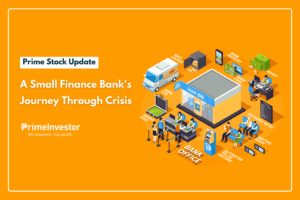When bond yields started their upward move this year, we started giving calls on G-Secs and SDLs auctioned on the RBI Retail Direct portal. We have one more such call today for those looking for regular income flow for the next 4.5 years.
Before you proceed, please read our earlier analysis on the present rate cycle.
Also, here are some basics to know if this is the first time you are venturing into G-Secs.
- Know all about G-Secs in this RBI Retail Direct FAQ
- Know everything about opening an account with RBI Retail Direct in this RBI link

A Caveat
Before we move to the recommendations, do note that buying g-secs directly has a couple of disadvantages, compared to buying gilts through the mutual fund route. When you buy g-secs directly, the interest payouts are not accumulated on the bond and paid out to you regularly. These interest receipts are taxed at your income tax slab rate, reducing your post-tax yield.
Mutual funds that invest in gilts in contrast, accumulate interest in their Growth options and also give you indexation benefits on capital gains after a 3-year holding period. Liquidity on g-secs before maturity can also be patchy, compared to MFs that give you anytime exit.
So, use this recommendation only if you are looking for income flow or cash flow options.
The recommendation today is a 4.5-year residual maturity G-Sec with an indicative yield of 7.12%. Given that this is a reissuance with an odd maturity, please do not expect liquidity on the bond. It is best held to maturity for income generation purposes.
You need to know the following:
- There is a coupon rate (the interest you will earn) mentioned when you bid, along with an indicative yield that is mentioned. The actual yield you will get on allotment will be the effective interest rate for the price at which the g-sec is allotted to you. This is likely to be close to the indicative yield. Yield is nothing but the interest income dividend by the purchase price.
- The yield will be known only after the auction closes. Therefore, at the time of applying, you may be sometimes asked to pay a little more than the amount you bid for, as a mark-up. The same will be refunded based on what the final yield is.
- Interest payments on these instruments are credited half-yearly. There is NO cumulative option. There is no TDS deducted. However, interest is fully taxable at your slab rate.
- In our calls, we will mention the bidding opening and closing dates, and the last dates for UPI and net banking transfers. Please note that the net banking option closes early. You need to invest quickly before the window closes. You can use UPI as well, which closes later, but note that the UPI limit is Rs 2 lakh only. Make sure the bank account linked to UPI is the same as the bank details given when you opened the RBI account.
- The bonds you buy through RBI Retail Direct will NOT get into your demat account. It will be credited and held in a Retail Direct Gilt (RDG) account. You can sell them through the RBI Retail Direct Secondary market account, for which you will have access when you open an RBI Direct Gilt account.
- Very importantly, we have nothing to do with the operational aspects of these bond issues. Kindly DO NOT WRITE TO US with queries on your allotment or bidding status. Our job would only be to alert you on timely opportunities. Write to [email protected] for any queries or call their customer support. We have tried this over the past month and have found them to be responsive.
Please read this detailed FAQ from RBI if you wish to know about bond issue price and yields. You can also read this explainer on the RBI Retail Direct platform that we wrote earlier. In general, the window for these auctions is very short. You have to keep tabs of our mail alerts on these recommendations and act fast.
Suitability of the bonds
This G-Sec is ideal for those who have regular income needs and can afford to lock in their capital for good safety with good returns. Compared to a 5-year bank deposit which today offers 5.5-6% or Post office options like the 5-year NSC that offers 6.8%, this bond offers a much higher yield of close to 7.12% with sovereign safety. The only caveat is your willingness to hold it for 4.5 years. It is ideal for those looking for income options and in a lower tax bracket. Given the bond’s odd maturity (4.5 years), the liquidity via secondary markets may be lower than for 5- or 10-year bonds.
Though yields on long term bonds are already at attractive levels, nothing stops them from moving up even further. If yields rise further over the next one or two years, as we expect them to, your holdings in these g-secs will suffer mark-to-market losses. But the losses will be made up over the long run. You need not worry about such losses if you are holding the bond till maturity, as you are sure to get back principal.
Please note that you need not necessarily lock into this investment option just because we have come up with this call. This is simply an option for those sitting with surplus and waiting for FD substitutes with better returns. You can check our Prime Bonds page for active and closed bond calls.




11 thoughts on “An income option for under 5-year time frame”
As usual very useful information. I got introduced to to SDLs via your platform and I must thank you for that. I have invested using RBI retail platform and I have couple of questions.
1. I invested in AP 2042 with YTM of 7.94%. However that “Allotted Yield” shows as 8.04%. Is this the coupon rate I am going get or 7.94%? If both are mark-to-market numbers, where to find the fixed rate of interest i am going to get?
2. The amount and allotment details are in “My Allotments”. Is this the only only place where this allotment gets reflected?
3. How to find the coupon payment frequency and the date of interest payment?
I appreciate if you can clear these doubts.
Many thanks
Sandeep
1. Allotted yield is your yield. Coupon will be mentioned in the name.
2. Iam afraid this is operational, based on your platform.
3. Half yearly is the frequency. 6 months from the date of original issue.
Vidya
Thank you very much 🙏
please provide feedback to my query posted on this article. even email from your side answering the query will suffice.
Hello,
Is there any way of knowing the all time (or in the last 20-25 years) high yield of long term maturity (15-20 years) GSecs (CG) ?
Thanks…Good Day..
You can try in investing.com. But 10 year is a more standard measure (as it has more liquidity) than longer term. Vidya
How different is it from buying it via Zerodha ? Is one missing something if not bought via the RBI direct portal ?
Some of them are not available on Zerodha portal..like SDLs for instance. Vidya
You’ve covered this earlier (bid closing date of 6th May 2022, with a indicative yield of 6.68%. Only difference with the new recommendation is the indicative yield has gone up to 7.12% – bid closing 3rd June 2022
Opinion needed = For NRE customer, is it advisable to have such bonds or NRE deposits is better option.
Can NRE person buy bond from RBI direct platform
These bonds are taxable as in you need to file as part of your income. NRE deposits are more tax efficient. If you are ok with it, you can go for them. Kindly write to [email protected] for queries and use blog to post comments alone. thanks, Vidya
Comments are closed.